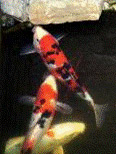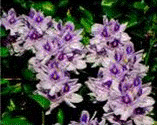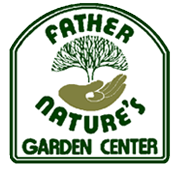 The sight and sound of water has always drawn the interest of people. Water adds an appealing element to a garden. Water gardens include waterfalls, small ponds and elaborate combinations of rockwork and lighting. Basically, a water garden is just a pool of water that is home to plants and possibly fish and other water creatures. Perhaps the most important consideration in water gardening is to choose the right spot. Most aquatic plants and fish need plenty of sun, so a site that gets 6-8 hours of direct sun is best. Choose a site away from tall shrubs and trees for best light and to prevent the accumulation of leaf debris.
The sight and sound of water has always drawn the interest of people. Water adds an appealing element to a garden. Water gardens include waterfalls, small ponds and elaborate combinations of rockwork and lighting. Basically, a water garden is just a pool of water that is home to plants and possibly fish and other water creatures. Perhaps the most important consideration in water gardening is to choose the right spot. Most aquatic plants and fish need plenty of sun, so a site that gets 6-8 hours of direct sun is best. Choose a site away from tall shrubs and trees for best light and to prevent the accumulation of leaf debris.
 Floaters Plan your water garden using some basic principles. Consider the size of your property and Fish2the ability to maintain the water garden. Small ponds are best for small properties. Features like waterfalls, rock work, lighting and fountains depend on your budget, style of your landscape, and purpose of the garden pond. When choosing aquatic plants, keep in mind that the plants should cover no more than 50 – 60 percent of the water surface.There are many types to choose from. Some are free floating while others are marginals. The most popular are water lilies which are submerged. Selection depends on the size of the pond and the kind of look you want. Some plants provide oxygen and help keep the pool healthy. Fish can be a beneficial addition, because they are good scavangers, cleaning up debris. They also can help control mosquito larva, and other insects. All garden pools regardless of size will need maintenance throughout the year. With proper planning you can ensure a healthy balance between living and decorative features of a water garden that can almost care for itself with simple maintenance inputs from you.
Floaters Plan your water garden using some basic principles. Consider the size of your property and Fish2the ability to maintain the water garden. Small ponds are best for small properties. Features like waterfalls, rock work, lighting and fountains depend on your budget, style of your landscape, and purpose of the garden pond. When choosing aquatic plants, keep in mind that the plants should cover no more than 50 – 60 percent of the water surface.There are many types to choose from. Some are free floating while others are marginals. The most popular are water lilies which are submerged. Selection depends on the size of the pond and the kind of look you want. Some plants provide oxygen and help keep the pool healthy. Fish can be a beneficial addition, because they are good scavangers, cleaning up debris. They also can help control mosquito larva, and other insects. All garden pools regardless of size will need maintenance throughout the year. With proper planning you can ensure a healthy balance between living and decorative features of a water garden that can almost care for itself with simple maintenance inputs from you.
Aquatic Plant Selection: There are many types of plants available for use in a garden pool. Considerations such as water depth, amount of sunlight and how each species relates to its surroundings need to be taken into account when choosing plant material. Both floating leafed and submerged plants are needed for a healthy pond and need to be included in your selection. Water garden plants are called aquatic, because their life cycle revolves around water. Aquatics can be divided into three major categories: marginals, water lilies, submerged and floater.
Marginal Plants are plants which emergent from the water. These plants are found along the edges of a pond where the roots are attached to the muddy bottom and portions of their stems stand above the water. Common examples include cattails, iris and pickerelweed. Most are not grown for their flowers.
Water Lilies are plants further from the edge, between shallow and deep water, there similar to emergent plants where roots are attached to the bottom, but have floating leaves above the water. These plants are grown for their dramatic flowers.
Submerged Plants are those that for the most part remain beneath the water surface. They are often referred to as oxygenators. These plants help combat algae by consuming excess nutrients while at the same time providing cover for fish and producing oxygen during daylight hours. Roots of these plants are not used for nutrient or water uptake, but only for anchorage. Because of this, many oxygenators may be potted in gravel. Submerged plants stocked at the rate of about one bunch per two square feet of water surface area. Caging these plants is sometimes suggested if the pond contains fish, which tend to forage on submerged plant foliage.
water Fishes- Water Gardening
 Floaters are not rooted in the soil, but are allowed to float freely above or below the water Floaters1surface. Floaters enhance the display of water lilies and lotus as well as adding a finishing touch to the water garden. They are the “ground covers” of the pond world. They may be restricted by a framework to prevent them from moving around or allowed to float freely with the breeze. This produces an ever-changing look to the water surface. Some floaters are very prolific and may need to be kept in check by scooping out excess plants on occasion. Most common are water hyacinth, water Lettuce and duckweed.
Floaters are not rooted in the soil, but are allowed to float freely above or below the water Floaters1surface. Floaters enhance the display of water lilies and lotus as well as adding a finishing touch to the water garden. They are the “ground covers” of the pond world. They may be restricted by a framework to prevent them from moving around or allowed to float freely with the breeze. This produces an ever-changing look to the water surface. Some floaters are very prolific and may need to be kept in check by scooping out excess plants on occasion. Most common are water hyacinth, water Lettuce and duckweed.

